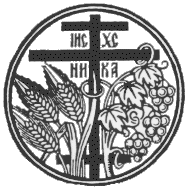Easter
eggs
 The
egg as a symbol of new life goes back to primitive times and
is found in all cultures and civilisations. Polynesian,
Chinese, Japanese, Indians, Phoenicians, Greeks, Romans, and
Europeans of the Middle Ages, all considered the egg in the
nature of the primordial beginning of life. In Greek
mythology, the 'black-winged night' gave birth to an egg
from which sprang eros, the source of life. The Romans
considered red eggs symbols of prosperity and happiness.
Roman historians relate traditions by which the birthdays of
notable Romans were marked by fowls laying red eggs. A
Phoenician myth has Aphrodite being born from an egg, and a
similar Greek myth has Helen being born from an egg that
fell from the moon.
The
egg as a symbol of new life goes back to primitive times and
is found in all cultures and civilisations. Polynesian,
Chinese, Japanese, Indians, Phoenicians, Greeks, Romans, and
Europeans of the Middle Ages, all considered the egg in the
nature of the primordial beginning of life. In Greek
mythology, the 'black-winged night' gave birth to an egg
from which sprang eros, the source of life. The Romans
considered red eggs symbols of prosperity and happiness.
Roman historians relate traditions by which the birthdays of
notable Romans were marked by fowls laying red eggs. A
Phoenician myth has Aphrodite being born from an egg, and a
similar Greek myth has Helen being born from an egg that
fell from the moon.
However, even though the Easter egg is obviously not an exclusive Christian introduction, its significance relates to the birth not of material life but to that spiritual experience enjoyed only in the life in Christ. Its symbolic adaptation to the events of Christ's sacrifice on the Cross, His entombment, and finally His breaking of the bondage of death by His Resurrection, all find a fitting expression in the Easter egg. The red colour of the Orthodox Easter egg signifies the blood of Christ, its shell His three-day entombment, and its breaking His Resurrection by which the 'egg of life' brought forth a life, up to then unknown. The cracking of the red eggs among Orthodox symbolises a mutual wish for breaking one's bonds of sin and misery and for entering the new life issuing from Christ's Resurrection.
Easter eggs are common among all Christians but with differences in colour. In recent years, and obviously for commercial reasons, artificial eggs are being made in sizes larger than that of the natural egg and mostly of chocolate usually stuffed with candies or other gifts. This is obviously a continuation of the European custom by which emperors and other rulers used to distribute after the Easter service gold-plated eggs filled with gifts to members of their cabinets.
The Orthodox custom of decorating the round Easter bread with red eggs at the four edges of the cross on the bread is a custom going back at least to the 12th century. Easter eggs are dyed on Thursday of the Holy Week and in some places a number of them are brought to church to be blessed at the Easter Liturgy. In the Orthodox Prayer Book there is a prayer for blessing Easter eggs.
from The Orthodox Messenger, v.
7(3-4)
published bi-monthly by the SA Central Youth
PO Box 269, GLENELG SA 5045 AUSTRALIA